The history of sound in games. Part 2 - Early Game Consoles and the Beginning of the PC Era
You are welcomed by the iCover time machine and today we continue our series on the origin and development of sound in games. We have already told you about the very beginning of game sound in Part 1. Slot machines . In this part, we move on to the next stage - the consoles and the beginning of this fantastic audio story in virtual reality. Let's go together a little to the past! ;)
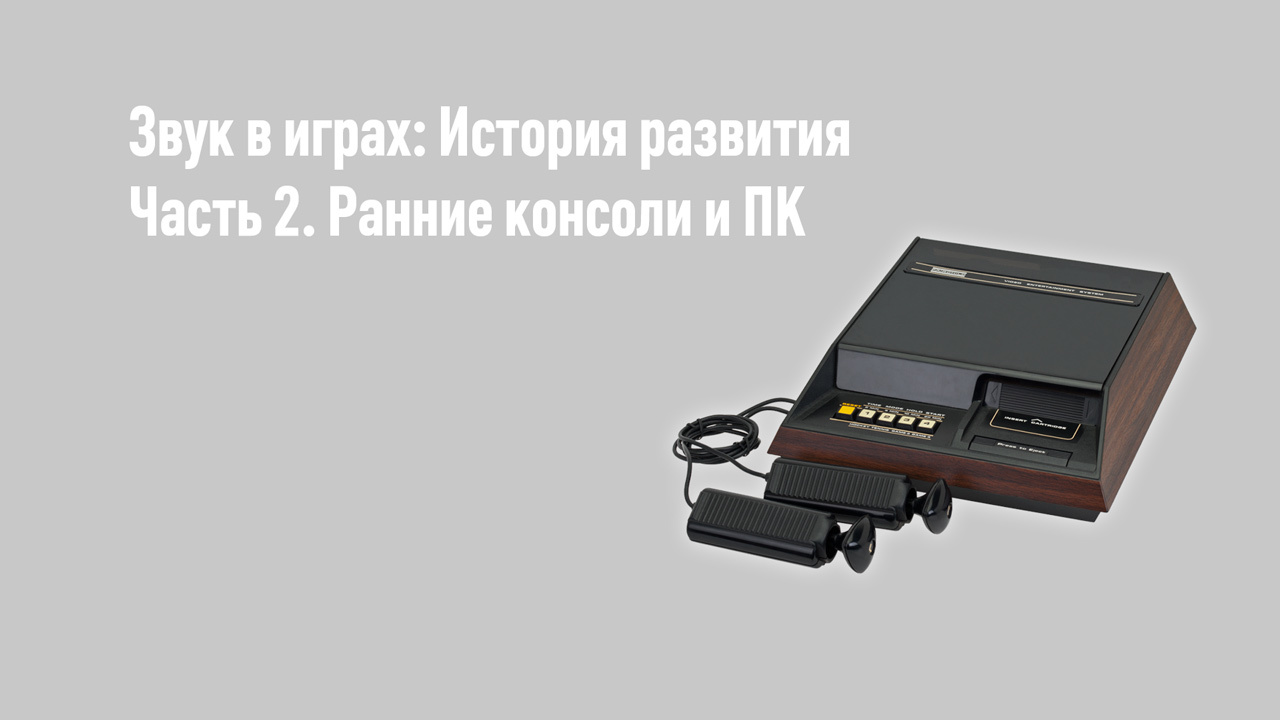
Even at the dawn of the slot machines described in the previous article, in 1966, engineer Ralph Bayer showed the Chase Game using a TV screen as an output device.
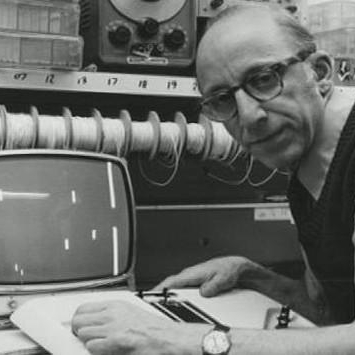
It was a primitive game for two people in which one point chased after another. Later, Ralph invented many prototypes, which were called “BrownBox”, with which you could play “Pong” and shoot ducks with a light gun.

Magnavox from Indiana liked the idea of a game console that connected to the TV and decided to bring the product to the mass market. This is how the Magnavox Odyssey game console (1TL200) came about - it was the first commercially available game console in the world. Unlike the BrownBox, the 1TL200 was modular, making it easier to repair and replace parts. The console itself was built on 40 discrete transistors and the same number of diodes, it used a combination of both digital and analog circuits, which are used to display images and control the game. The graphics were primitive: dashes and dots that allowed you to play Pong and the likeness of sports games. The device worked on batteries and did not support color and sound, which was done specifically to reduce the cost of the design.
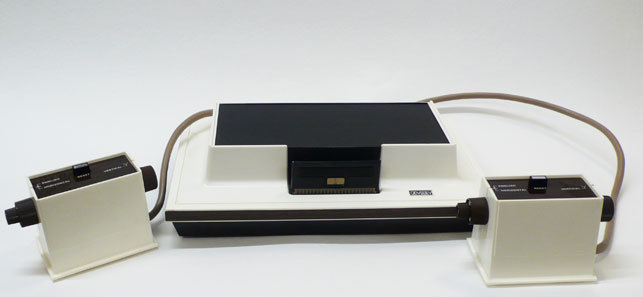
At the presentation, this prefix made a splash, causing great interest among dealers. In the first year of sales, since 1972, Magnavox Odyssey with 12 games on board sold 100 tons of copies, which at a price of $ 100 brought a huge profit to the company. In 1982, Bayer received a patent in the United States for the "method and apparatus for television games." But a terrific start turned out to be the same failure - poor marketing ruined a good prefix.
In 1972, Atari, a small, modest company, began developing its console. In 1973, the Pong slot machine was released. The engineer of the company Harold Lee comes up with the idea of how to make this game portable. In 1975, a portable version of the game called Atari Telegames appeared on store shelves, and only in the winter of 1975, 150 thousand copies were sold at a price of $ 100 apiece. This figure came as a surprise to publishers, as it exceeded forecasts by 3 times. In 1976, the company released Home PONG, which became an equally successful console. The difference from the original was that now the score of the players was displayed on the screen, and also in the game there was a corporate sound “beep”, which became one of the symbols of this game.

In 1976, PONG for the Poor, Coleco Telstar, appeared on the shelves. With a price half that of Magnavox and Atari, this device sold 1.5 million units during the year. It was a colossal circulation for that time. Along with this model, Coleco Telestar Classic came out and got its name thanks to the wooden insert, it can also be called one of the first cases of the release of the console with a specialized design. This console had three built-in games: Tennis, Handball and Hockey, with three difficulty levels.

The beginning of the second generation of consoles can be considered the year 1976, it was then that the Fairchild channel F prefix, the world's second prefix with replaceable games on cartridges, was released, it was released under the name VES - Video Entertainment System. It allowed you to play a variety of PONG-shaped games and had a built-in speaker that was able to reproduce the tone at 500Hz, 1kHz and 1.5kHz with the ability to switch.
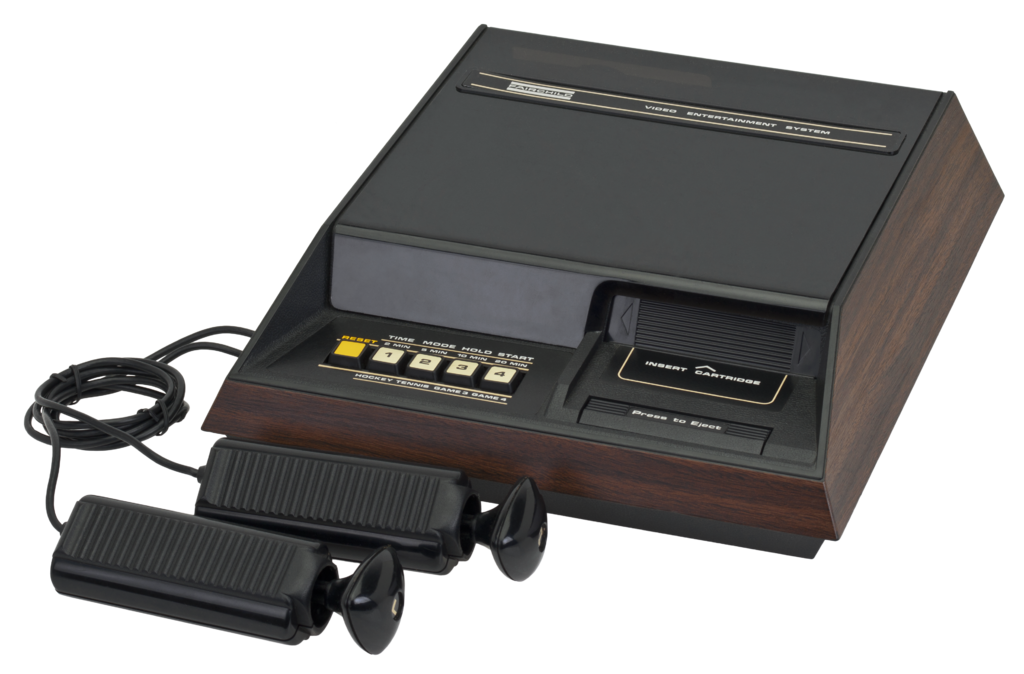
The console quickly gained popularity and Atari immediately noticed this. Subsequently, in 1977, a console was released with a very similar name VCS (Video Computer System), later called Atari 2500. This console became the most popular in the 70-80s, largely due to the licensed Taito game “Space Invaders”, in In 1980, 2 million copies were sold. In total, 9 games were developed for this console.
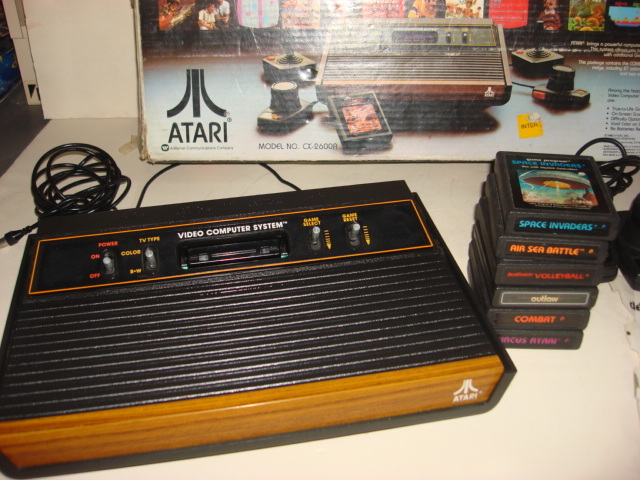
The sound chip of this set-top box was created specifically for high-quality sound reproduction and was built into the TIA chip (Television Interface adapter), which is responsible for graphics, sound and controllers. These chips allowed reproducing only two voices, which led to the use of mono sound for sound and effects - so that they could sound at the same time. On each channel, a four-bit waveform generator was used, which generated up to 16 simple combinations, not much different from each other. Most often, either two rectangular waves (bass and tremoring sound) were generated or sinusoidal and sawtooth when using the “white noise” effect, where necessary.

In 1980, Intellivison appeared, equipped with a good processor, graphics and sound system. In popularity, this console almost caught up with the Atari 2800. The design scheme of this model was modular and allowed you to connect the ECS (Entertainment Computer System) extension with a music keyboard and an additional sound chip to it, allowing you to play up to 6 independent channels simultaneously. This functionality was made possible thanks to the General Instruments PSG AY-3-8914 chip, which has proved itself in a number of slot machines. Thanks to the powerful, at that time, audio system, the console could play recognizable musical fragments of various works, for example, “Flight of the Bumblebee” in the game Buzz Bombers.
In response to this, in 1982 Atari released the Atari 5200 model equipped with a Pokey sound processor, which could process 4 independent channels at the same time, and could control the volume level, pitch and add distortion to each channel. This set was enough to simulate the game of a live musical collective in real time, using synthesized sounds.
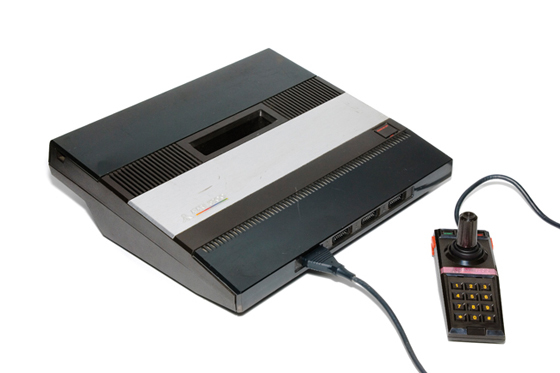
Also in 1982, the Emerson Arcadia 2001, Vectrex and Coleco Vision consoles were released. The first was unique in vector graphics and its own monitor, the other two were more powerful devices.
The growing popularity of consoles was partly due to the transfer of games from arcade machines to them, for example Coleco Vision received Donkey Cong in 1981, a game in which two main Nintendo mascots were first released - the mustachioed plumber Mario and the Donkey gorilla from the Kong family, subsequently received their own series of games. Also, the above console used the processor SN76489 from Texas Instruments used in slot machines. It consisted of three square wave generators and a “white noise” generator.
In 1982, the American market was oversaturated with game consoles and games, low-quality games from third-party developers began to appear on the shelves. This was one of the reasons for the crisis of the gaming market of that time. Competition led to a drop in prices for games, developers cut the board, which also had a bad effect on the quality of games. In 1983-1984 there was a colossal recession in the market, for several years it was unprofitable, which caused a shift from the US to Japan. And the next generation of consoles were developed already for users from this country. Atari company existed on the market until 1996, but due to poor sales and a sharp decline in popularity, it finally left it. Good night sweet prince!
The advent of affordable PCs of the time was another cause of the console market crisis. Such a new gadget as a smart watch surpasses them now in characteristics in almost all respects, but then it was a breakthrough. They also connected to the TV, but used floppy disks and magnetic tapes as storage media. The price of such a device was $ 400-600. The main advantage of those devices was that they could be used not only for games, but also for work: programming training, accounting, and more. In addition, the games could be rewritten with friends, which made it possible to save money (piracy began even then).
Commodore 64 home computer went on sale in August 1982, it was equipped with an 8-bit MOS6510 processor, a separate processor for graphics and sound, 64 KB of RAM and a plug-in module for reading floppy disks. The sound processor had three channels with several types of wave signals, “ring” modulation and tone filters, it was the most advanced device of that time. The SID processor allowed to receive a special sound, which is still appreciated, for example, the Swedes Machinae Supremacy use these sounds in their songs. Among the authors and composers of music for games of that time were Rob Hubbard (author of the music for Road Rush 1/2), Ben Duglish (Gauntlet 1/2) and Martin Galway (Arkanoid).
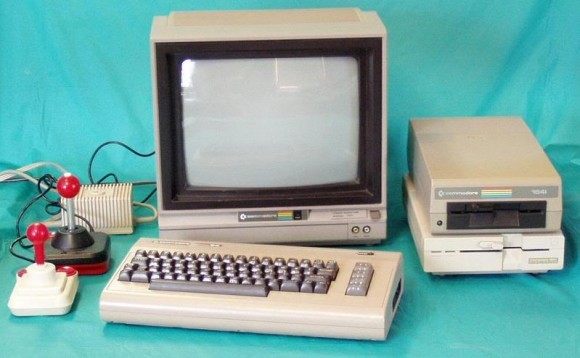
The main competitors of the Commodore were Atari 800 and Apple 2, the first was expensive in production, which later moved to Asia, and Apple was outdated and could not compete in terms of graphics or sound. In total, C64 was sold in the amount of 17 million copies and it became the best-selling PC in history.
Donkey Cong brought the industry out of the crisis, which firstly became the first platformer, and secondly the first insanely popular cross-platform game. It was developed by Nintendo in 1981 and has been ported to all PCs and consoles of the current and future generations.
For those who want to get acquainted with the games of that time, there is the opportunity to find a bunch of emulators and roms that are easily installed on PC and Android devices , allowing you to understand the history of games of that time.
In the next part, we will consider the development of sound in new generation consoles and PCs .
List of other parts of the series:
Read the iCover blog as well:

The first generation of consoles
Even at the dawn of the slot machines described in the previous article, in 1966, engineer Ralph Bayer showed the Chase Game using a TV screen as an output device.

It was a primitive game for two people in which one point chased after another. Later, Ralph invented many prototypes, which were called “BrownBox”, with which you could play “Pong” and shoot ducks with a light gun.

Magnavox from Indiana liked the idea of a game console that connected to the TV and decided to bring the product to the mass market. This is how the Magnavox Odyssey game console (1TL200) came about - it was the first commercially available game console in the world. Unlike the BrownBox, the 1TL200 was modular, making it easier to repair and replace parts. The console itself was built on 40 discrete transistors and the same number of diodes, it used a combination of both digital and analog circuits, which are used to display images and control the game. The graphics were primitive: dashes and dots that allowed you to play Pong and the likeness of sports games. The device worked on batteries and did not support color and sound, which was done specifically to reduce the cost of the design.

At the presentation, this prefix made a splash, causing great interest among dealers. In the first year of sales, since 1972, Magnavox Odyssey with 12 games on board sold 100 tons of copies, which at a price of $ 100 brought a huge profit to the company. In 1982, Bayer received a patent in the United States for the "method and apparatus for television games." But a terrific start turned out to be the same failure - poor marketing ruined a good prefix.
In 1972, Atari, a small, modest company, began developing its console. In 1973, the Pong slot machine was released. The engineer of the company Harold Lee comes up with the idea of how to make this game portable. In 1975, a portable version of the game called Atari Telegames appeared on store shelves, and only in the winter of 1975, 150 thousand copies were sold at a price of $ 100 apiece. This figure came as a surprise to publishers, as it exceeded forecasts by 3 times. In 1976, the company released Home PONG, which became an equally successful console. The difference from the original was that now the score of the players was displayed on the screen, and also in the game there was a corporate sound “beep”, which became one of the symbols of this game.

In 1976, PONG for the Poor, Coleco Telstar, appeared on the shelves. With a price half that of Magnavox and Atari, this device sold 1.5 million units during the year. It was a colossal circulation for that time. Along with this model, Coleco Telestar Classic came out and got its name thanks to the wooden insert, it can also be called one of the first cases of the release of the console with a specialized design. This console had three built-in games: Tennis, Handball and Hockey, with three difficulty levels.

The second generation of consoles
The beginning of the second generation of consoles can be considered the year 1976, it was then that the Fairchild channel F prefix, the world's second prefix with replaceable games on cartridges, was released, it was released under the name VES - Video Entertainment System. It allowed you to play a variety of PONG-shaped games and had a built-in speaker that was able to reproduce the tone at 500Hz, 1kHz and 1.5kHz with the ability to switch.

The console quickly gained popularity and Atari immediately noticed this. Subsequently, in 1977, a console was released with a very similar name VCS (Video Computer System), later called Atari 2500. This console became the most popular in the 70-80s, largely due to the licensed Taito game “Space Invaders”, in In 1980, 2 million copies were sold. In total, 9 games were developed for this console.

The sound chip of this set-top box was created specifically for high-quality sound reproduction and was built into the TIA chip (Television Interface adapter), which is responsible for graphics, sound and controllers. These chips allowed reproducing only two voices, which led to the use of mono sound for sound and effects - so that they could sound at the same time. On each channel, a four-bit waveform generator was used, which generated up to 16 simple combinations, not much different from each other. Most often, either two rectangular waves (bass and tremoring sound) were generated or sinusoidal and sawtooth when using the “white noise” effect, where necessary.

In 1980, Intellivison appeared, equipped with a good processor, graphics and sound system. In popularity, this console almost caught up with the Atari 2800. The design scheme of this model was modular and allowed you to connect the ECS (Entertainment Computer System) extension with a music keyboard and an additional sound chip to it, allowing you to play up to 6 independent channels simultaneously. This functionality was made possible thanks to the General Instruments PSG AY-3-8914 chip, which has proved itself in a number of slot machines. Thanks to the powerful, at that time, audio system, the console could play recognizable musical fragments of various works, for example, “Flight of the Bumblebee” in the game Buzz Bombers.
In response to this, in 1982 Atari released the Atari 5200 model equipped with a Pokey sound processor, which could process 4 independent channels at the same time, and could control the volume level, pitch and add distortion to each channel. This set was enough to simulate the game of a live musical collective in real time, using synthesized sounds.

Also in 1982, the Emerson Arcadia 2001, Vectrex and Coleco Vision consoles were released. The first was unique in vector graphics and its own monitor, the other two were more powerful devices.
The growing popularity of consoles was partly due to the transfer of games from arcade machines to them, for example Coleco Vision received Donkey Cong in 1981, a game in which two main Nintendo mascots were first released - the mustachioed plumber Mario and the Donkey gorilla from the Kong family, subsequently received their own series of games. Also, the above console used the processor SN76489 from Texas Instruments used in slot machines. It consisted of three square wave generators and a “white noise” generator.
In 1982, the American market was oversaturated with game consoles and games, low-quality games from third-party developers began to appear on the shelves. This was one of the reasons for the crisis of the gaming market of that time. Competition led to a drop in prices for games, developers cut the board, which also had a bad effect on the quality of games. In 1983-1984 there was a colossal recession in the market, for several years it was unprofitable, which caused a shift from the US to Japan. And the next generation of consoles were developed already for users from this country. Atari company existed on the market until 1996, but due to poor sales and a sharp decline in popularity, it finally left it. Good night sweet prince!
Beginning of the era of personal computers
The advent of affordable PCs of the time was another cause of the console market crisis. Such a new gadget as a smart watch surpasses them now in characteristics in almost all respects, but then it was a breakthrough. They also connected to the TV, but used floppy disks and magnetic tapes as storage media. The price of such a device was $ 400-600. The main advantage of those devices was that they could be used not only for games, but also for work: programming training, accounting, and more. In addition, the games could be rewritten with friends, which made it possible to save money (piracy began even then).
Commodore 64 home computer went on sale in August 1982, it was equipped with an 8-bit MOS6510 processor, a separate processor for graphics and sound, 64 KB of RAM and a plug-in module for reading floppy disks. The sound processor had three channels with several types of wave signals, “ring” modulation and tone filters, it was the most advanced device of that time. The SID processor allowed to receive a special sound, which is still appreciated, for example, the Swedes Machinae Supremacy use these sounds in their songs. Among the authors and composers of music for games of that time were Rob Hubbard (author of the music for Road Rush 1/2), Ben Duglish (Gauntlet 1/2) and Martin Galway (Arkanoid).

The main competitors of the Commodore were Atari 800 and Apple 2, the first was expensive in production, which later moved to Asia, and Apple was outdated and could not compete in terms of graphics or sound. In total, C64 was sold in the amount of 17 million copies and it became the best-selling PC in history.
Donkey Cong brought the industry out of the crisis, which firstly became the first platformer, and secondly the first insanely popular cross-platform game. It was developed by Nintendo in 1981 and has been ported to all PCs and consoles of the current and future generations.
For those who want to get acquainted with the games of that time, there is the opportunity to find a bunch of emulators and roms that are easily installed on PC and Android devices , allowing you to understand the history of games of that time.
In the next part, we will consider the development of sound in new generation consoles and PCs .
List of other parts of the series:
- Sound in games: history and development. Part 1 - The First Slot Machines
Read the iCover blog as well:
